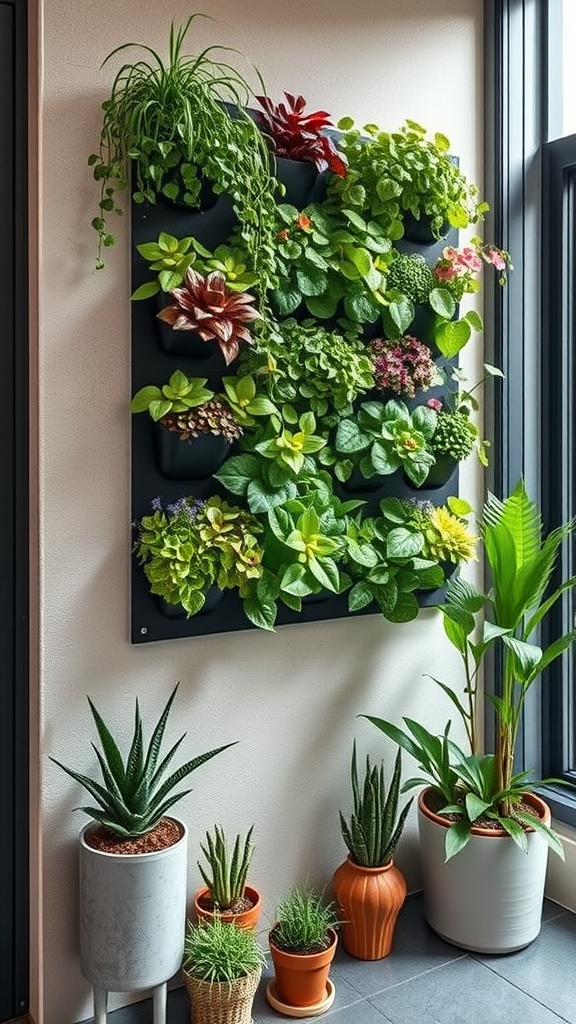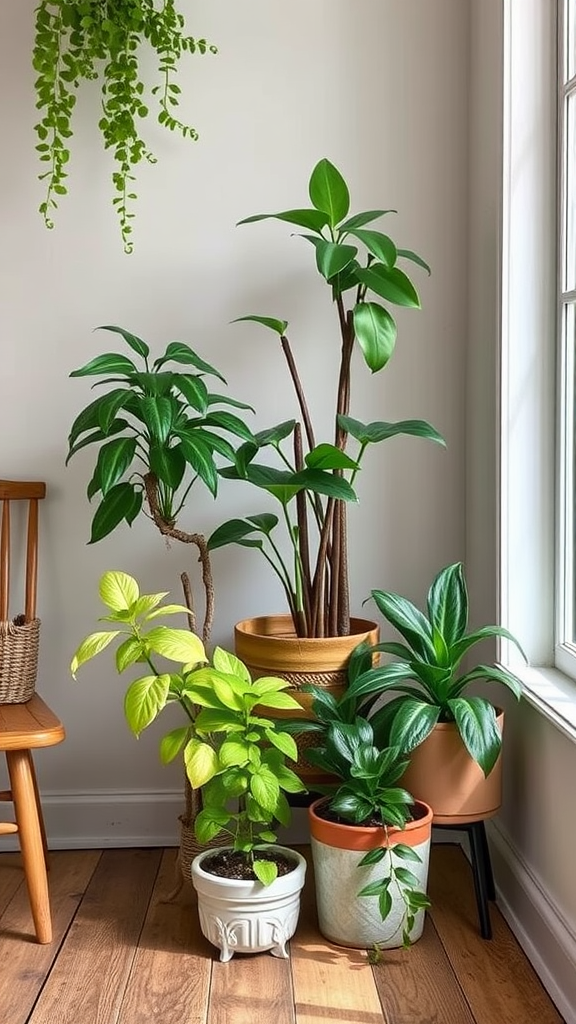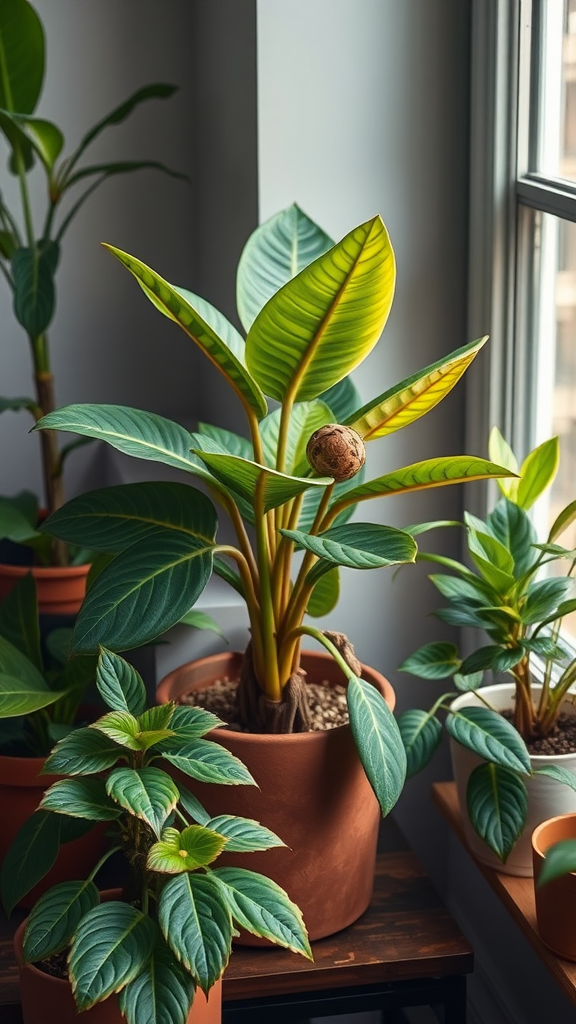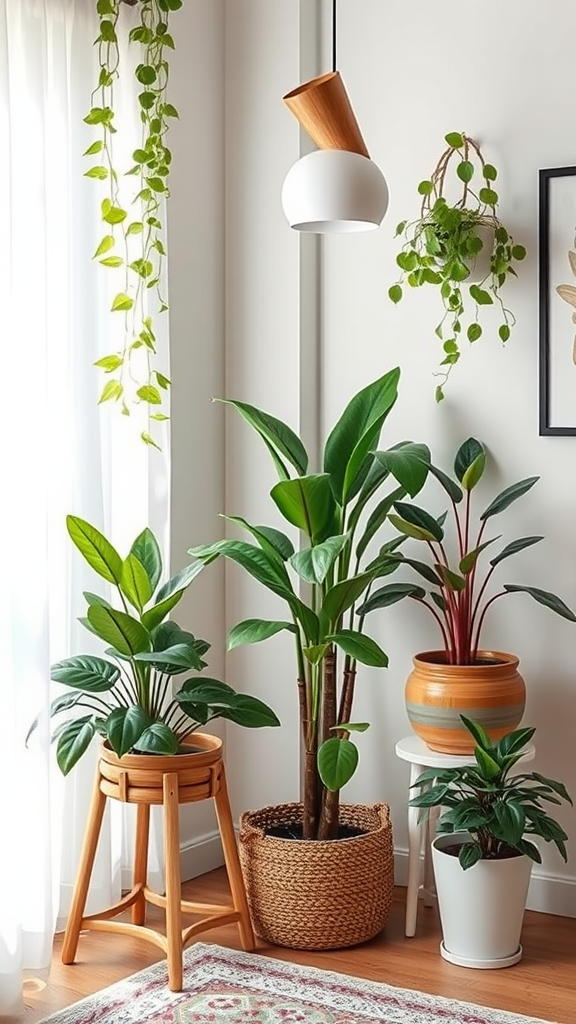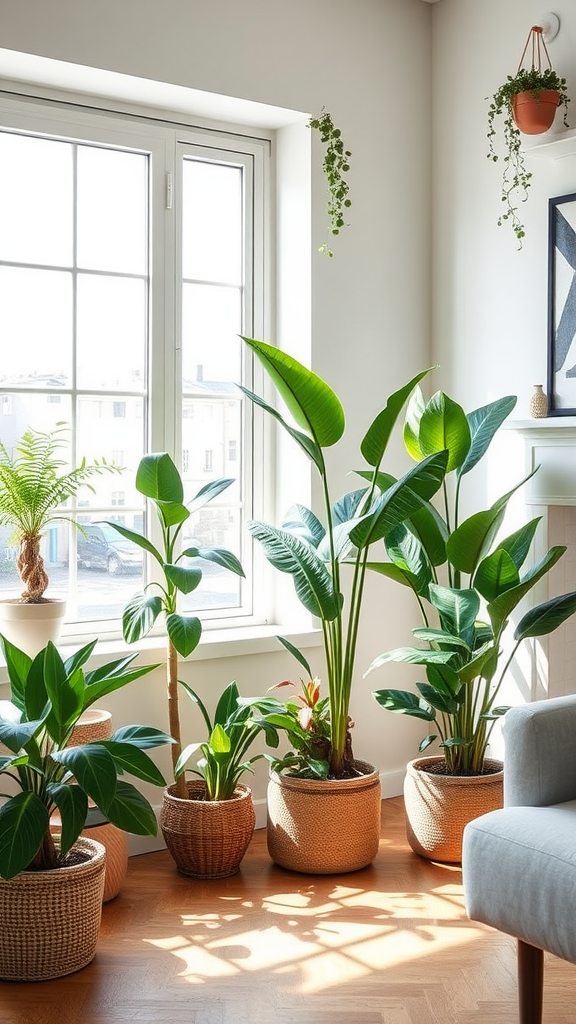Creative Ways to Maximize Vertical Space with Garden Ideas for Small Areas
Living in a small space doesn’t mean you have to sacrifice your green thumb. With creative vertical gardening techniques, you can turn even the tiniest nook into a lush oasis. Here are some innovative ideas to maximize vertical space and bring more greenery into your life.
1. Vertical Wall Planters
Consider using vertical wall planters, which allow you to create a stunning green wall. These come in various designs and materials, from metal frames to fabric pockets, to fit your aesthetic perfectly. You can plant herbs, succulents, or flowering plants that will thrive in a vertical setting.
2. Hanging Pots
Hanging pots bring life to unused wall space or ceiling areas. You can hang them at different heights to create an eye-catching display. Use macramé hangers for a bohemian touch, or modern wire baskets for a sleek look. This method is ideal for trailing plants like ivy or string lights.
3. Birdcage Planters
Transform an old birdcage into a quirky planter. Simply place pots inside the cage or attach planters to the exterior. This unique piece acts as both decor and a home for plants, functioning beautifully in any small garden area.
4. Ladder Planter
Use a wooden ladder as a planter! Lean it against a wall or fence, and place potted plants on its rungs. You can easily switch plants or add new ones as you go along. This method adds dimension and interest to your space.
5. Pallet Gardens
Repurpose wooden pallets into vertical gardens. Stand them upright and fill each space with soil and plants. Whether you choose flowers, herbs, or vegetables, pallet gardens offer a rustic charm while allowing you to grow on a vertical plane.
6. Window Box Garden
Install window boxes on your balcony railings or under your windows. These convenient planters can be filled with colorful flowers or fragrant herbs, adding beauty to your exterior while utilizing vertical space effectively.
7. Vertical Trellis
A vertical trellis isn’t just functional; it’s also a great way to create a living wall. Train climbing plants like beans or peas to grow up the trellis. This not only maximizes space but creates a lush and productive garden.
8. Gutter Gardens
Old gutters can be transformed into unique planters. Mount them horizontally against a wall or fence and fill them with soil and annual flowers or herbs. The long, narrow design makes them perfect for small spaces.
9. Vertical Plant Stands
Invest in vertical plant stands that feature multiple tiers. These stands allow you to showcase a variety of plants in a compact footprint. Choose a stand with wheels to easily move it around as needed.
10. Green Curtains
Create a living curtain by hanging pots of trailing plants. Place them on hooks or shelves close to your window. This not only saves space but also provides privacy and blocks out harsh sunlight.
11. Repurposed Furniture
Consider using a shelf or an old piece of furniture as part of your vertical garden. Fill the shelves with potted plants of varying heights. This method allows creativity in layering plants while improving aesthetics.
12. Wire Grid Displays
Attach a wire grid to your wall and hang various plants in individual pots using clips or hooks. This modular approach to gardening makes it easy to swap out plants or rearrange them as desired.
13. Indoor Vertical Gardens
Bring the beauty of vertical gardens indoors by using specially designed kits or DIY solutions. Create a compact green wall with easy-to-care-for plants like ferns or snake plants, giving your indoor space a refreshing touch.
14. Stackable Planters
Choose stackable planters to create a vertical garden without needing extensive space. These modular pots allow for an upward design, making it simple to add more plants without taking up valuable ground space.
15. Decorative Columns
If you have a vertical feature, like a column or pole, use it to hang pots or vining plants. Wrap a trellis around it or simply place pots around the base to make the most of that vertical real estate.
These creative vertical garden ideas are perfect for small areas, letting you enjoy nature without sacrificing space. Get started on your vertical garden today and watch your small space flourish!
Choosing the Right Plants for Your Vertical Garden: Tips and Tricks
Creating a stunning vertical garden can transform your space and enhance your home’s aesthetic. However, the key to a successful vertical garden lies in choosing the right plants. Here are some essential tips and tricks to help you select the best greenery for your vertical garden project.
Understand Your Environment
Before selecting plants, it’s crucial to consider your vertical garden’s environment. Factors such as sunlight, moisture, and temperature can significantly affect plant growth. Here are simple steps to assess your environment:
- Light Levels: Observe how many hours of direct sunlight your garden gets each day. Some plants thrive in full sun, while others prefer shaded areas.
- Humidity: Assess the humidity of your space. Plants such as ferns and peace lilies love humidity, while succulents prefer drier conditions.
- Temperature: Consider the temperature range, as extreme conditions can affect plant health.
Choosing Suitable Plant Types
Once you understand your environment, you can start selecting the types of plants to include. Here are three categories of plants to consider:
- Succulents: Ideal for sunny spots, succulents are low maintenance and come in various shapes and sizes. Examples include Echeveria and Sedum.
- Herbs: If you like to cook, consider growing herbs like basil, mint, or thyme. They thrive well in vertical gardens and add a delightful scent.
- Vines: Climbing plants, like ivy or morning glory, can add a lush, cascading effect to your garden. They are perfect for maximizing vertical space.
Consider Plant Care Needs
Each plant has unique care requirements. Before making your selections, think about how much care and attention you can commit. Review these considerations:
- Watering: Some plants require frequent watering, while others are drought-resistant. Ensure you pick plants compatible with your watering routine.
- Fertilizing: Some households prefer low-maintenance plants that don’t need regular fertilizing. Research your chosen plants’ needs before adding them to your garden.
- Pest Control: When selecting plants, consider their susceptibility to pests. Plants like marigolds can help deter harmful insects.
Selecting by Growth Habit
Growth habits play a crucial role in vertical gardening. Some plants grow upright, while others spread horizontally. To maximize your garden’s visual appeal, consider these tips:
- Upright Growers: Plants that grow vertically, such as hollyhocks or sunflowers, can add height and structure.
- Cascading Plants: Select plants like trailing ivy or petunias for downward growth, creating an appealing cascading effect.
- Bushy Varieties: Compact, bushy plants like compacta are perfect for filling gaps and providing fullness.
Mix Textures and Colors
When designing your vertical garden, mixing different textures and colors can enhance its overall look. Here’s how to achieve a vibrant display:
- Color Choices: Combine plants with a variety of colors. For instance, vibrant reds, greens, and purples can create a visually stunning display.
- Textural Variety: Pair smooth-leaved succulents with rough, fuzzy foliage plants to add depth.
- Seasonal Interest: Consider adding seasonal blooms or foliage that changes color with the seasons for continuous interest.
Consult Local Resources
Don’t hesitate to reach out to local nurseries or gardening clubs for advice. They can offer insights on which plants thrive best in your area and share practical growing tips to help you succeed.
By carefully selecting the right plants for your vertical garden, you can create an engaging and beautiful green space that brings joy to your home. Remember to consider your environment, growth habits, care needs, and aesthetic preferences to ensure a thriving vertical garden that suits your lifestyle.
Conclusion
Creating a vertical garden in small spaces can truly transform your living environment. By maximizing vertical space, you not only add greenery but also enhance the aesthetic appeal of your area. Creative solutions like wall-mounted planters, hanging shelves, and repurposed pallets provide unique ways to showcase your favorite plants. These methods not only utilize every inch effectively but also allow you to express your style, making your garden a personal sanctuary.
When it comes to choosing the right plants, keep in mind both aesthetics and functionality. Selecting plants that thrive in vertical environments, such as trailing vines, succulent varieties, and compact herbs, ensures your garden flourishes. Consider factors such as light conditions, the climate in your area, and how much maintenance you’re willing to invest. With the right plants, your vertical garden can become a lush retreat that brings joy and tranquility to your space.
Establishing a vertical garden is an enjoyable and rewarding project. It encourages creativity and can even serve as a space for relaxation and mindfulness. Plus, gardening fosters a connection to nature, which can be particularly beneficial in urban settings where green space may be limited. By applying the tips and tricks covered, you can create a thriving and beautiful vertical garden that transforms your small space into a vibrant oasis. Whether you have a balcony, patio, or even a small indoor area, it’s easier than you think to bring the beauty of nature right to your door. Happy gardening!

